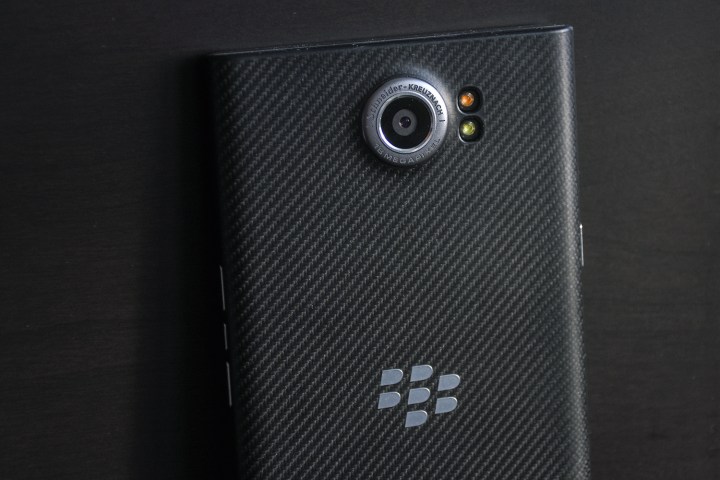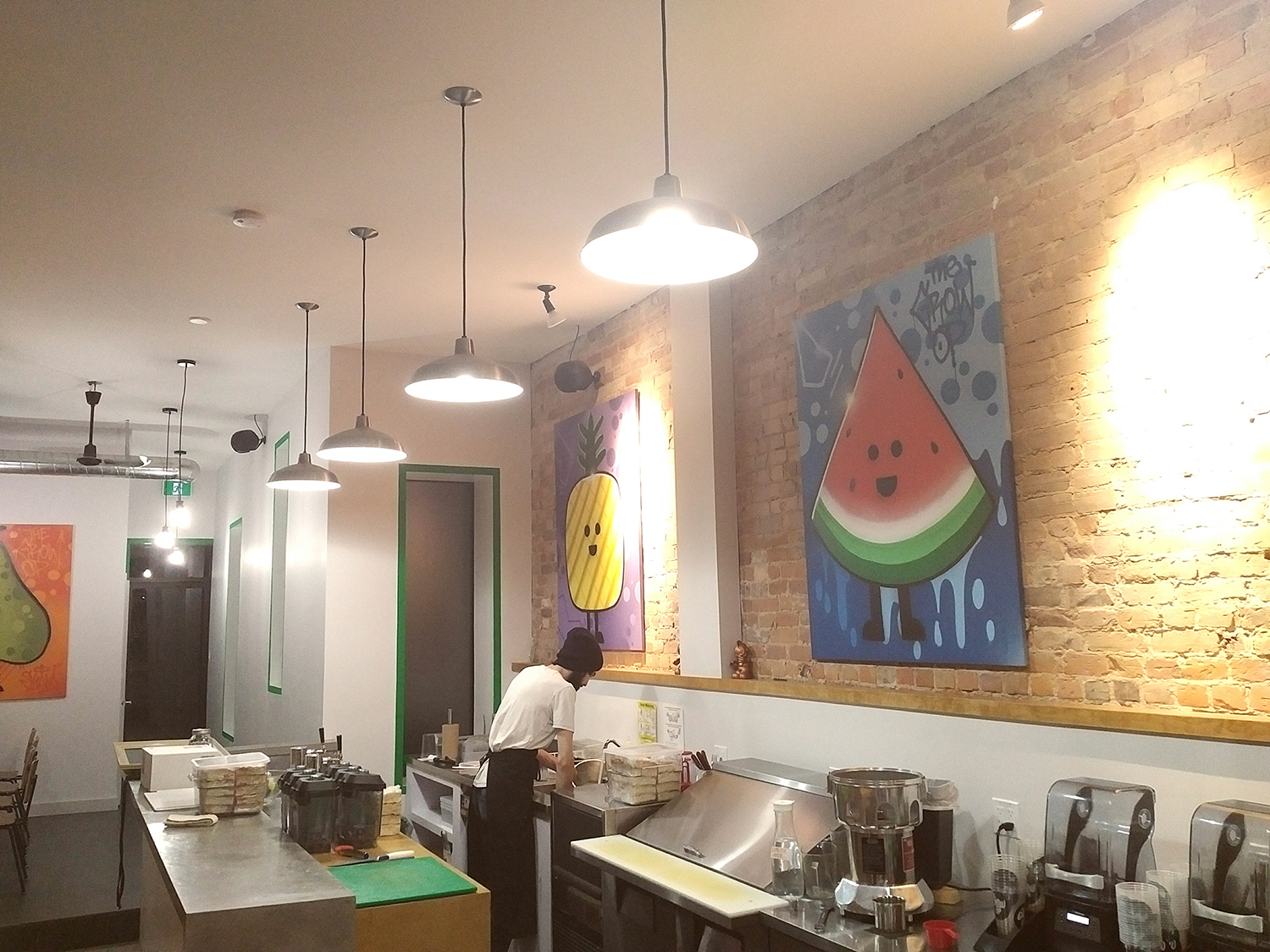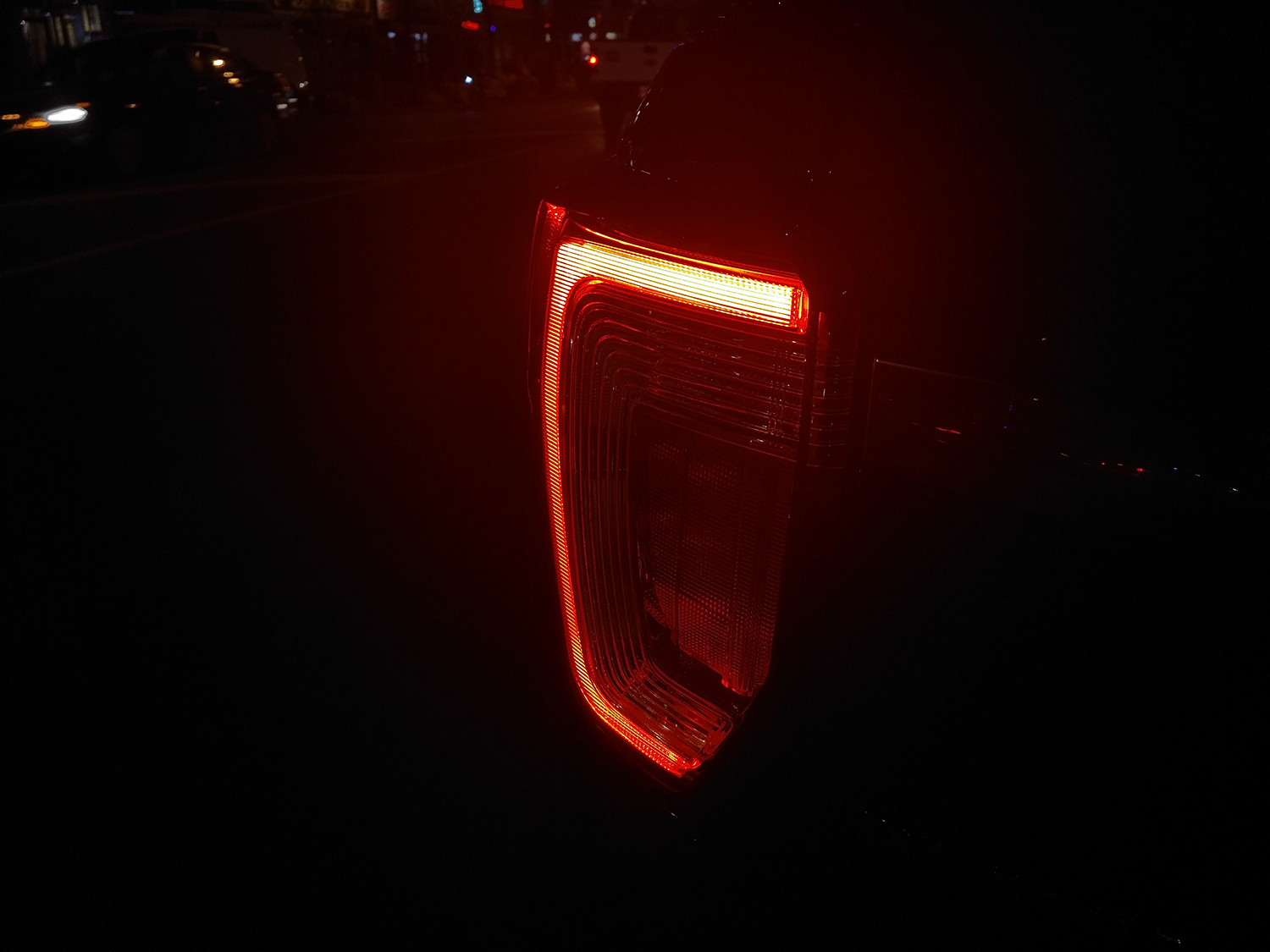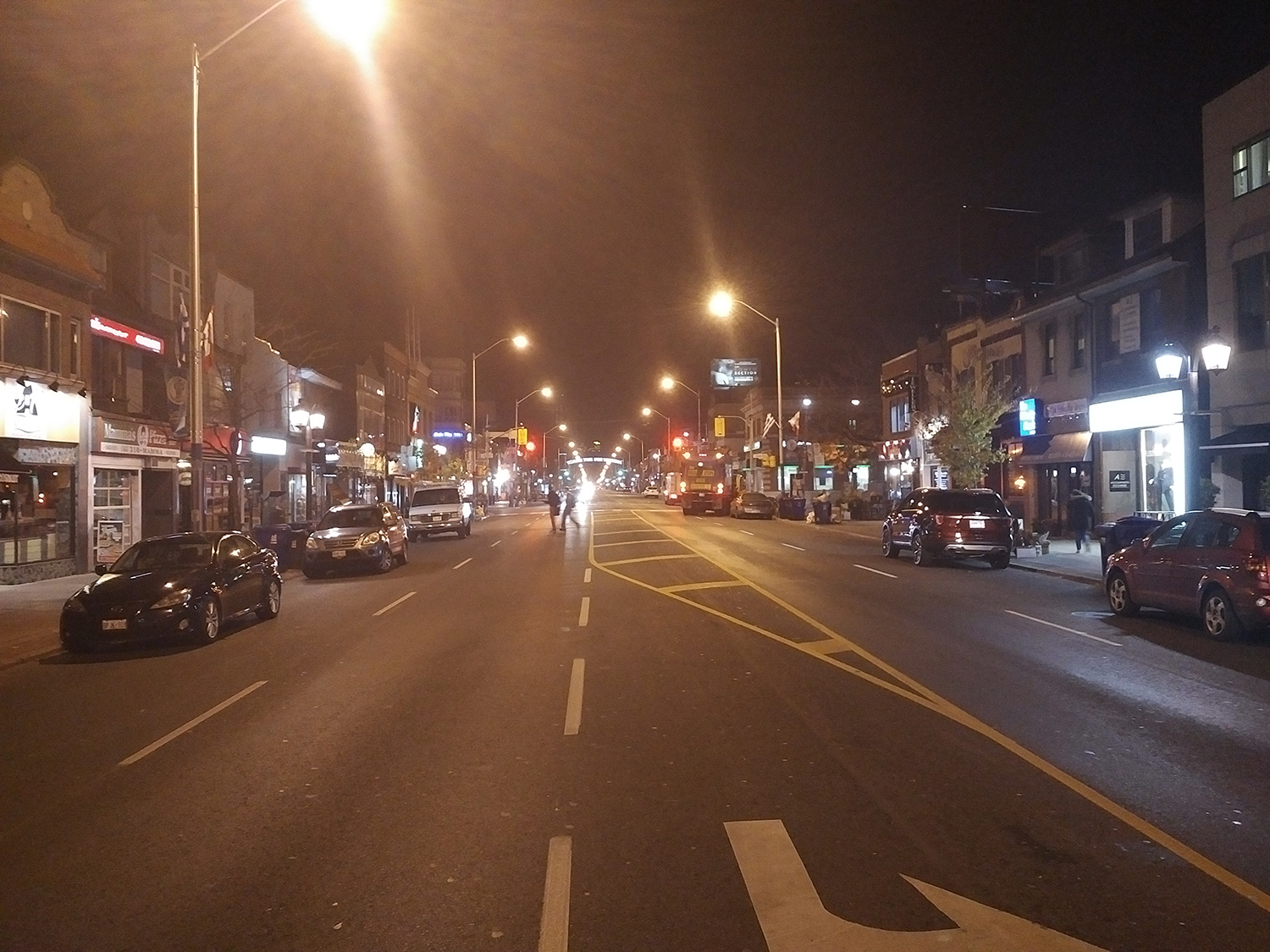
“The Priv is a remarkable comeback for BlackBerry, and the best Android phone if you like a physical keyboard.”
- Solid build quality with gorgeous display
- Runs Android and Google Play Store!
- Hub is an excellent productivity tool
- Wireless charging and Android Pay capable
- Slide-out QWERTY keyboard
- Camera is noisy in low-light
- Productivity Tab should do more
- Physical keyboard adds girth
- No backward compatibility with BB10
What do you get when you put an Android in the body of a BlackBerry? You get the Priv (pronounced “priv” not “pryve” or “preeve”), a device that’s less like Frankenstein’s monster and more like a crazy cocktail that nobody would normally consider ordering.
Any way you slice it, it wasn’t supposed to be this way for BlackBerry, which has clung onto its battered BB10 operating system for almost three years. The Priv is intriguing for the simple fact it’s not some knockoff or watered-down version of Android baked in. The question: Is this a shotgun marriage of convenience, or a matrimonial pairing that could turn heads for the right reasons?
Fortunately, it’s the latter. We wrote the troubled Canadian phone maker off a couple years ago and told readers not to buy a BlackBerry, but today, we take it all back. It’s a good time to buy a BlackBerry.
To slide out, or not slide out
The slide-out keyboard at the bottom is a key identifier for the Priv, and its presence is divisive. Those who are beholden to their physical keyboards will look at this and get excited. Those who have since moved on to touch keyboards will probably shrug their shoulders. It’s a double-edged sword for BlackBerry, because the company’s onscreen keyboard is always an option.
It’s neat that the touch-sensitive gestures introduced on the Passport work on the Priv’s physical keyboard, but in an age where SwiftKey and Swype are readily available, it’s not as easy to argue that the hard buttons present an advantage. I count myself as being in that camp, and having always liked BlackBerry’s onscreen keyboard, so it was my default choice when using the Priv.
Still, there is something very satisfying about that clicking sound when you slide the keyboard open or shut. When opening it and typing right away, there is the choice to either use Google or BlackBerry’s Device Search, which indexes everything that’s stored on the phone.
BlackBerry takes it up a notch
The familiar keyboard joins BlackBerry’s first use of an OS other than its own, and it’s all too easy to cast the Priv off as a last-gasp hybrid; but it’s more complicated than that. Unlike in the past where the equation amounted to BlackBerry hardware with a half-open door for
BlackBerry sprinkled in some of its own secret sauce, but this is mostly
If you’re expecting a heavily-skinned
When Digital Trends first met with BlackBerry to see the Priv, company executives weren’t shy in suggesting it would be “the most secure
However, the Priv runs on 5.1.1 Lollipop, so part of DTEK’s job is to manage specific permissions for installed apps, something Marshmallow does natively. The idea is to track all installed apps and monitor what they’re doing, what they’re accessing and for how long. Beyond that, its security assessment is based on what kind of screen lock protection you’re using, along with other settings that could improve protection further. At a base level, the Priv is designed to keep all encrypted data from being removed or copied from the phone without proper permissions. DTEK isn’t required to do that, however, so tech-savvy users are unlikely to navigate over to it.
Android is the focus
Outside the BlackBerry security apps, Google’s presence is easy to see. Its suite of apps is front and center on the home screen. Google Maps is the default map, Google Now is the voice assistant, Chrome is the browser, and Play is the app store. There is no way to sideload BB10 apps into the Priv. Everything, from the notification shades, settings, app tray, icons, widgets and search functions are almost entirely vanilla
Some of these tweaks include a different multitasking screen (that looks like a Windows Phone Live Tile layout), plus BlackBerry’s own keyboard, notification sounds, and an extra row of visual notifications on the lock screen and pull-down shade. BBM is pre-loaded, but doesn’t trump any existing messaging apps. In fact, all of BlackBerry’s own apps are entirely voluntary and can be disabled.
The Hub, a cornerstone of BB10, is prominent during setup. The premise is the same as it always was, with email accounts, text messages, BBM, Twitter, Facebook, and more lined up in one place. Swiping from the left reveals the account list, including with a useful log of all calls. Swiping down from the middle reveals upcoming events, and a shortcut to the calendar. BlackBerry users will feel right at home with all this, and frankly, it’s one of the best messaging organizers I’ve seen on
This phone has the Google Play Store and everything. It’s as equipped as any
The problem is that it doesn’t natively support everything. For example, WhatsApp is a staple appearance in the Hub, but Hangouts isn’t supported, so you have to use a workaround to integrate texts with the app, then merge conversations for contacts who use both. It’s awkward, and not very intuitive.
Then there’s the Productivity Tab — the whole reason the Priv’s screen is curved. Swipe the tab in to glance at things like emails, messages, calendar entries, and tasks. The tab can be shortened, adjusted along the edge, or moved to the other edge. Useful for getting a quick look at various details, the Tab doubles as a shortcut to the corresponding apps those details come from. While nice to have, it would be far more effective if items were actionable. Right now, there is no way to even delete anything, much less edit or respond without having to be sent to another app.
Big and bold
The build quality here is impressive. At 192 grams, the Priv has more heft to it than almost any other phone in its class does. Slap on a case (and there are some to choose from) and you’re easily past 200g. Part of the reason is the slide-out QWERTY keyboard at the bottom — and it’s not the only nod to the past found on the Priv. The phone retains a small, multicolor notification LED that blinks to notify and inform you about the latest alerts.
The Priv is easily the most powerful BlackBerry smartphone we’ve seen. The 5.43-inch curved OLED 1440p display has good brightness and contrast to it, and is covered by a sheet of Gorilla Glass 4. Inside is the 1.8GHz Snapdragon 808 hexa-core processor, and while it isn’t the fleetest of chips it serves the
The non-removable back is made of a rubberized plastic that offers good grip at the expense of being a fingerprint magnet. The
While my review unit didn’t have it, the Priv does support both the Qi and PMA wireless charging standards. The good news is, the Priv’s NFC connectivity is compatible with
Good camera by day…
Camera performance has never been more crucial for flagship smartphones, and BlackBerry’s pedigree in that regard has been lacking, to say the least. The Priv’s 18-megapixel rear image sensor with OIS is a significant step up from the company’s legacy, though I find myself feeling let down.
In daylight and good lighting, the camera is capable of great composition. Sharp, colorful, and with fast focusing, it does the job. Once the lighting dims or night falls, the camera struggles. It’s a consequence of going with a large image sensor, in that its size relative to that of the pixels means each pixel takes in less light. This becomes more pronounced when shooting with an f/2.2 aperture lens.
As an example, LG may have gone with a 16-megapixel sensor in the LG G4, but it balanced that with a wider f/1.8 aperture, better OIS and its own color spectrum sensor. Throw in superb manual controls, and the G4 shoots exceptionally well in low-light conditions.
The Priv doesn’t have a manual mode like the G4 to aid its cause.
There are about 19 filters included, which can be used on the fly instead of as a post-production edit. Otherwise, there isn’t a lot of depth to the interface.
Battery
The curved display showed some of its usefulness when I plugged in the Priv to charge. A notification lights up along the edge, noting the current percentage and time left till it’s back at 100%. Low-power tasks won’t take up much of the battery, helping it stay on for a longer time. Mixed usage, with streaming media, games and browsing, takes it down a notch.
The Priv can handle a 24-hour day, so long as there’s a balance in usage. Streaming back-to-back episodes of The Walking Dead on Netflix will naturally chew up a solid chunk of the battery, whereas a day at work filled with productivity tasks will easily make it past the workday with plenty to spare.
Conclusion
The DT Accessory Pack
Up your game and the get the most out of your gear with the following extras, hand-picked by our editors:
Ace Armor Shield Screen Protector ($13)
Leather Smart Flip Case ($61.16)
Slide-Out Hard Shell Priv ($49)
Every phone BlackBerry launches seems to be a cement block attached to the company leg, slowing its shuffle towards the precipice. The Priv is no different, and can’t be labeled as a savior. It is a gamble to get noticed and perhaps, one last gasp to test the market’s appetite for hardware from the beleaguered brand.
BlackBerry and its staunchest supporters have stared at a bleak picture for years now, and it’s hard to see the Priv turning that into a rosier image. However, the Priv is proof that combining good hardware and software can enhance
It’s not clear how BlackBerry faithful might cozy up to this device, but the slide-out keyboard may be enough on its own to woo some over.
If you want a phone with a physical keyboard, the BlackBerry Priv is an excellent choice. It’s also a top contender if you have security concerns. Other than purchasing a Nexus 6P or Moto X Style Pure Edition, BlackBerry’s Priv might be the best way to assure you actually get the needed and necessary hardware updates you need to stay safe online. We’ll continue using the Priv and updating this review in the weeks to come.
The Priv is $700 outright and unlocked from ShopBlackBerry.com and AT&T is the first carrier to offer the device at $249 on a two-year contract or $0 down on AT&T Next.
Highs
- Solid build quality with gorgeous display
- Runs Android and Google Play Store!
- Hub is an excellent productivity tool
- Wireless charging and Android Pay capable
- Slide-out QWERTY keyboard
Lows
- Camera is noisy in low-light
- Productivity Tab should do more
- Physical keyboard adds girth
- No backward compatibility with BB10































